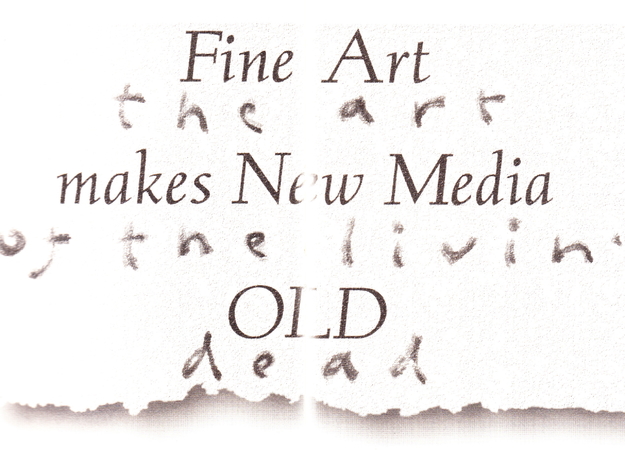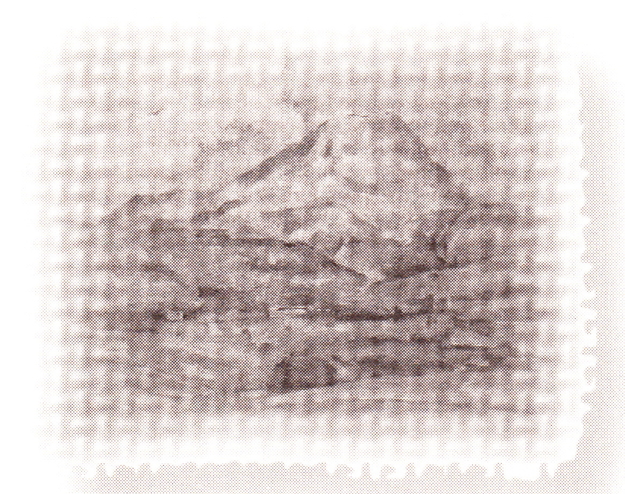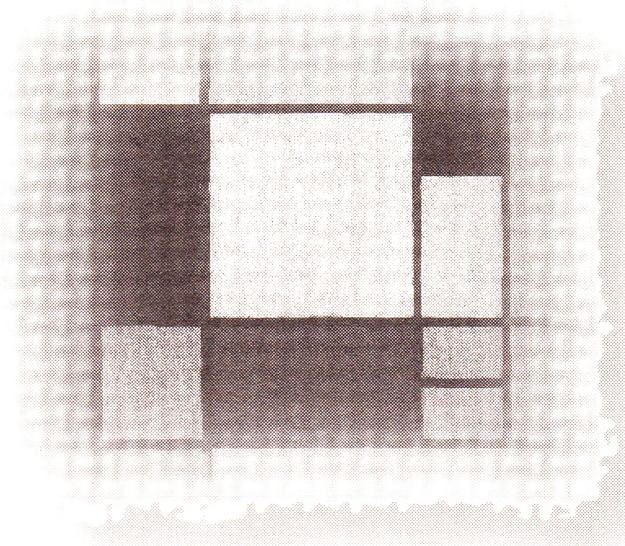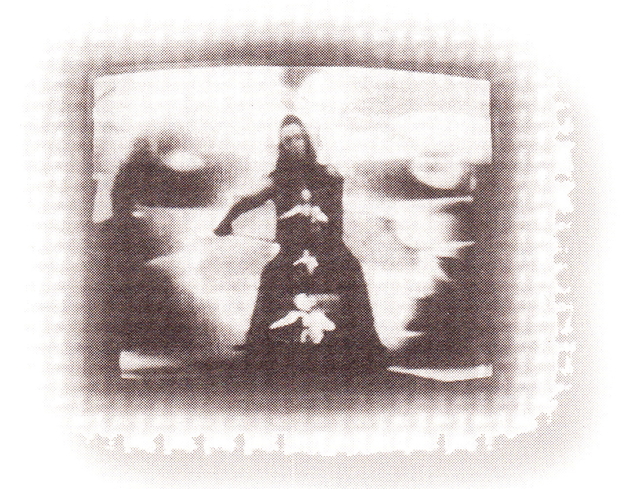The Bad Fairy of Art as accomplice to Disposable Culture
Fine Art, which until then had been the manipulator of visual media in society. changes with the industrial
revolution. The emergence of mechanical reproduction economically disqualifies Fine Art's media technologies such as sculpture and painting. Fine Art remains a pre-industrial revolution discipline which produces desirable objects by hand. In this sense, Fine Art is as anachronic as handmade shoes. The buyers of handmade shoes are the same people who collect Fine Art.
The foremost quality of art (the intrinsic artistic quality) then is no longer that of normally functioning media; this quality, which used to be an additional value, is now its sole remaining function. Art becomes nothing but a bearer of aesthetic quality. Ordinary art became Art. The aura of acquired objects now establishes the atmosphere.
Art is ripe for the museum. The museum?
The Museum as New Medium
During this same period in which Fine Art becomes socially disfunctional. a whole new medium was taking shape: the Museum.
The museum is a depot and showroom of historically / culturally significant objects: formerly contemporary objects which have proven their use in society.
The museum devours these objects and places them in service of its own timeliness.
What differentiates the museum from existing private collections is that the museum takes objects out of the sphere of individual fetishism and supplies the collected objects with a new collective content. The fetishes, which still display the flicker of an image in individual collections, are reduced in the museum to pixels, to elements in the total picture that the museum etches onto our retinas.
Museums did not replace individual collections. The collector's fetishism is a normal human trait that cannot be replaced by a medium. Rather, the museum gave the fetishist social status. Any decent collection, after all, can easily resemble a World Exhibition, a museum, or at least a Salon. The Museum is the ambition of the Collector, and the Collection the vestibule of the Museum. The collection is the paintbox of the Museum.
An obsolete technique is definitively vanquished once the technical possibilities are subject to museum sanction. Aesthetics start to replace technique. just as the products of Fine Art are chilled by the rigid, all-ossifying idea of beauty. Art spins an aesthetic, nostalgic veil around its techniques and thus renders them unusable. Fine Art excludes itself in a practical sense from any socially relevant discourse.
The new ambition of Fine Art is to produce culturally significant objects. Art becomes a slave of the fetishist. It passes over society and produces its objects directly for the fetishist and the museum and thereby becomes definitively dependent on those objects.
New Media as Weapon in a played-out Resistance
The glowing fulfillment of the secret longings of Fine Art – l 'Art pour l'Art; putting the quality of content/artistry first – is frustrated by fetishism. Fetishism, the direct client, puts art in a financial stranglehold.
Art has become a purveyor of pixels. It sees its own content placed in the service of a new medium; content matters less and less, as long as Art keeps supplying objects. This increasingly regressive tendency has led to a manic obsession in Art over the last few years.
Art begins to problematise and thematise its relation with the object. Concept is divorced from the object and from the rudiments of art's function in society (like figuration). A hybrid non-physical art begins to form.
Although Duchamp took notice of the situation early on and turned things around – he radically stripped art of its content and ridiculed its somaphobia – one important movement in Art continues to pursue immateriality. But Art cannot abandon the object, because it would then sever the umbilical cord through which it is nurtured by fetishistic collectors and by which it is tied to tradition.
The fetishists look on spellbound as Art twisted itself into knots in disdain of its own corporeality. In its desperation Art begins to borrow more and more from other disciplines: theatre, film, literature, architecture, video, philosophy.
Electric media in particular are handicapped in Fine Art. They have no desirable object as their carrier. Art plays this handicap off against the fetishist. On the other hand, in so doing, Fine Art forces its language, which is indissolubly connected with the desirable object, on electric media.
Only then is the Desirable Handmade Object really present: in its absence.
After being touched by Art, the products of these disciplines are accepted benevolently by the fetishists, who simply go on collecting the material offspring, often mere souvenirs or certificates. The fetishist meanwhile gets extremely excited and begins to pay ever-higher prices in order to come by his pleasures.
Electric media, video and computer, thus becoming collected, end up in the museum in a very premature stage. Whilst in fact the most timely communications media. they are mummified by Art in its attempts to produce culturally significant objects according to the old criteria of the museum. From that moment on. the use of new media is an artistic statement; Art is making a statement about its own existence. Art reduces new media to pixels for the museum medium. Art makes new media old.
Meanwhile, Duchamp's provocation, which during all this non-corporeal excitement was only partially recognised as a possible new tactic, begins to look more attractive.
As the dance around the absent object approached its climax, a parallel and at the same time opposite current of pure, meaningless objects arose. These zero-objects with minimal meanings were directly and uncomplicatedly satisfying. The fetishists greedily accepted them as a welcome, relaxing change from the ever-further postponed climaxes of the refined game of promise and denial.
A New Game
Once the possibilities of new media, theatre and philosophy have been explored sufficiently, the flight from the object begins to lose its thrill in the master / slave game of Art and fetishist. The perversion has been taken as far as it can go and begins to approach the threshold of boredom. All attention then shifts to that new variant wherein the object's presence is constant and the sheer possibility of artistic content is put to the test. Art is thus driven ever further and remains exciting.
Within this new mainstream, electric media no longer play a role, because they cannot produce the object, which has again become the norm. Only now does it become really clear that Art has never used new media for their intrinsic possibilities, but because of their impossibilities. Thus, Fine Art never investigated nor developed the real possibilities of new media as it did in the past with its old media. People who are still trying to produce Fine Art using new media are in fact living a 1970's perversion. And there is nothing so tiresome as a perversion elevated to a norm.
Using Museums
Seen from a historical point of view, the museum is an extremely important form of collective memory. But because the museum is itself a medium, it inevitably oppresses the vitality of those media products it encompasses, which are inexorably subordinated to the images the museum is sending out. If you want to be on top of things, better stay away from museums. Never try to meet the demands of the museum, because you will only disqualify yourself as an independent source of images or any other product relevant to society. The museum only offers possibilities to those who know how to use it for their own ends – not to those who serve it.
A Home for Aged Media
The museification of media eliminates them as practical instruments and transforms them into idle aesthetics. The fact that the first museums for new media are now appearing makes one fear the worst for their future. Film, for example, is already being encapsulated. People are producing films for festivals and art cinemas in a last-ditch attempt to secure themselves a place alongside the greats of yesteryear. Filmmakers who participate in this phenomenon place themselves outside any socially relevant discourse and make Cinema old with their Artistic Film. Which is all the more tragic because they fail to notice that Cinema lives on with utmost vitality on television. The cultural significance of a film shown on television is infinitely greater than that of the same film shown in a film museum.
Now that the cultural value of television is beginning to be recognized and the successors of the television technique are coming forward, the film museum is developing into a Museum of the Moving Image. Media Artists rejected by the Fine Art museums are welcome here too! Bury yourself! Bury yourself!
New Media rule OK!
New media do not focus sui generis on the aesthetic of Fine Art and its old media. Nor do new media focus on the museum. New media are developing their own agenda and aesthetics. They are not threatened by Art or the Museum. New media can be as old as time as long as they go their own way. Viewed in this light, the idea oft-heard in Media Art circles – that artists play a necessary role in the development of new media, that artists give new media their voice, is a deformed reversal of developments we have by now seen often enough. It is new media that give these artists their voice.




